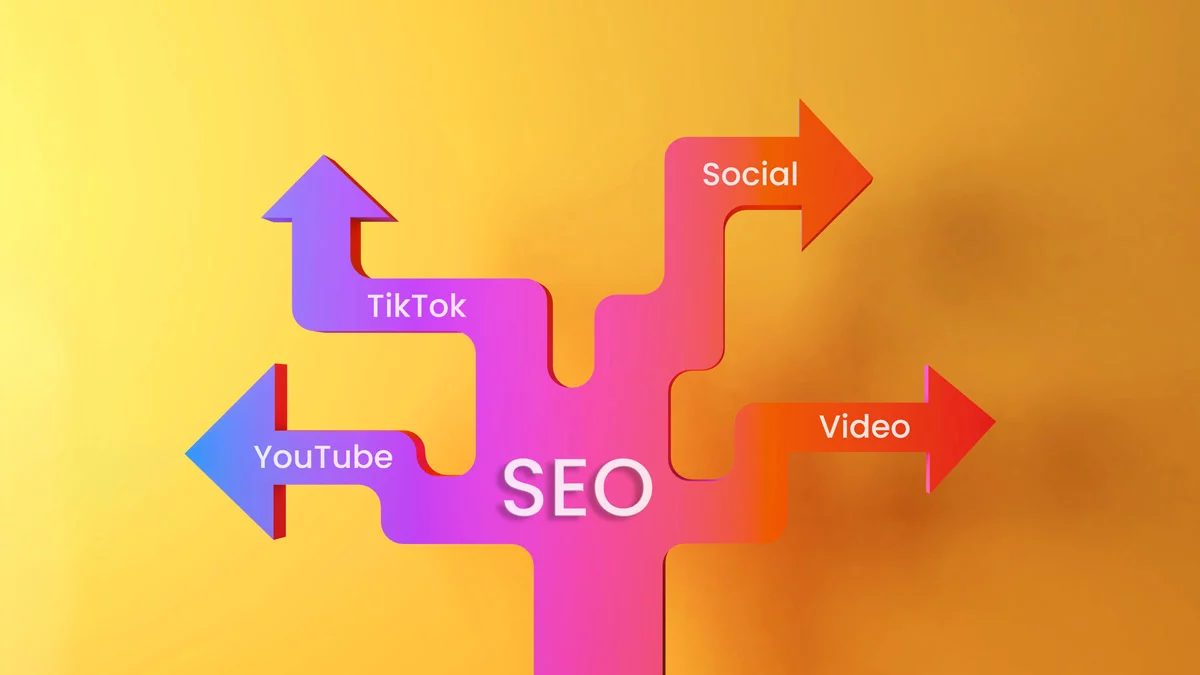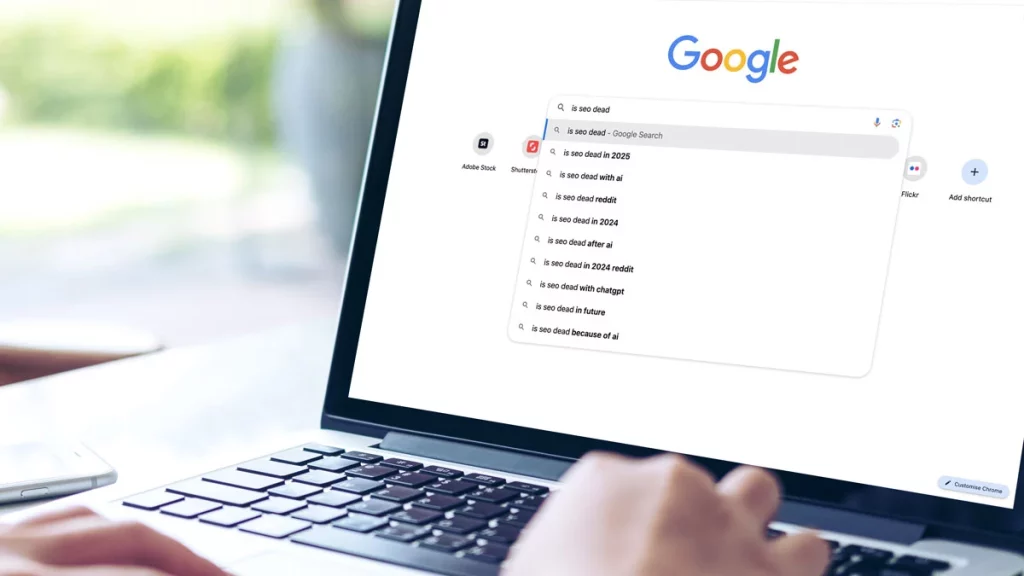In today’s digital landscape, traditional Search Engine Optimisation (SEO) is no longer enough. Optimising for keywords, backlinks, and on-page content still matters, but it’s only one part of the picture. Google’s algorithm has evolved. It now pulls signals from a much broader range of digital platforms, far beyond websites alone.
To remain visible, relevant, and competitive in search results, SEO must now be approached through a multi-channel lens.
Jump to a section:
Should SEO become just “Search Optimisation”?
It’s a valid question: is the term “search engine optimisation” even accurate anymore?
Google’s algorithm is continuously adapting, factoring in signals from across the web, not just traditional web pages. For instance, video content from YouTube (owned by Google) is prioritised in many search results. Social signals, such as links for social media on Google Business Profiles, also influence rankings.
Zero-click searches are on the rise too, particularly with the growing use of AI-powered search summaries, such as Google AI Overviews. These often pull from forums, like Reddit, video transcripts, and podcast notes, not just web pages or articles.
The traditional SEO best practices still remain, but with that said, focusing on your visibility across multiple platforms is now more important than ever. Whilst the term SEO will still be used, you should go beyond simply optimising your content for search engines and begin to strategise being found across multiple digital platforms. If you hear “SEO” or “search engine optimisation” as a buzzword, you should adjust your mind to think more broadly as “search optimisation”.
The rise of multi-channel preference
If you’ve not heard of “multi-channel preference” before, it’s where a user’s behaviour is more inclined to engage with a brand across several digital channels, not just organic search.
Even before AI reshaped search behaviour, user preferences were already changing. Gen Z, in particular, represents a major shift in how people search for information.
According to a recent report by eMarketer, 46% of Gen Z prefer using social media platforms over traditional search engines when looking for information. Platforms like TikTok, Instagram, and YouTube are increasingly becoming the go-to discovery tools for younger audiences.
Even if Gen Z isn’t your core demographic today, they will be in the future. Brands that embrace multi-channel strategies now will have a significant advantage down the line.
Practical strategies for multi-channel SEO
So, what does a modern, multi-channel SEO strategy look like in practice?
- Content Repurposing
Transform blog posts into YouTube explainers, short-form videos for TikTok or Instagram Reels, and tailor each version for the unique style and expectations of each platform. - Consistent Brand Identity
Ensure your brand voice, visuals, bios, and keywords remain consistent across all platforms. Google increasingly recognises and rewards entities with cohesive digital footprints. - Cross-Platform Integration
Link your platforms together. Embed videos in blog posts. Promote those blog posts via email newsletters. These interconnections help reinforce your authority.
In conclusion
Today’s digital environment demands a broader, more integrated approach. It’s no longer enough to optimise a page for keywords, you must build a recognisable and respected presence across every platform your audience uses to search, discover, and evaluate content.
The future of SEO isn’t just about ranking in Google. It’s about being found, trusted, and shared across a diverse, multi-platform ecosystem. That’s the new definition of visibility.








